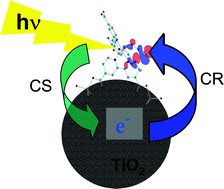Photochemical energy conversion: from molecular dyads to solar cells
Abstract
Photochemical approaches to solar energy conversion are currently making rapid progress, increasing not only academic but also commercial interest in molecular-based photovoltaic solar cells. This progress has been achieved not only by increased understanding of the physics and physical chemistry of device function but also through advances in chemical and materials synthesis and processing, which now allows the design and fabrication of increasingly sophisticated device structures organised on the nanometer length scale. In this feature article, we review some progress in this field, focusing in particular upon the electron-transfer dynamics which underlie the function of


 Please wait while we load your content...
Please wait while we load your content...